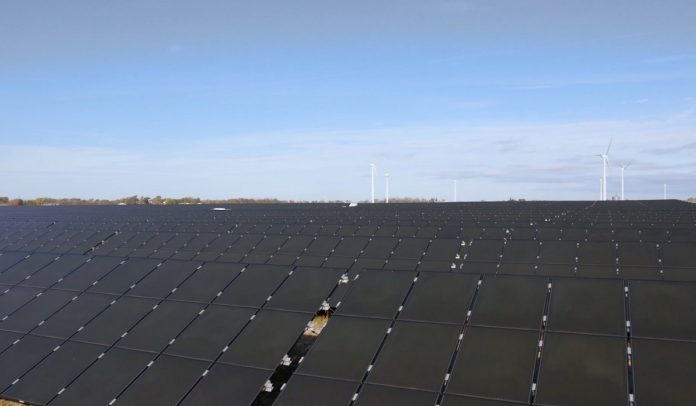The versatility of solar paint and solar glass is revolutionizing the way we harness the sun’s energy, transforming residential and commercial buildings into sustainable powerhouses. These innovative technologies are not only helping to reduce our reliance on fossil fuels but also offering new opportunities for architects and designers to create aesthetically pleasing, energy-efficient spaces.
Solar paint, also known as photovoltaic paint, is a cutting-edge technology that can generate electricity by absorbing sunlight. This innovative paint contains light-sensitive nanoparticles, which are capable of producing an electric current when exposed to sunlight. One of the key advantages of solar paint is its ability to be applied to a wide range of surfaces, including walls, roofs, and even windows. This makes it an ideal solution for retrofitting existing buildings or incorporating into new construction projects.
In addition to its versatility, solar paint offers a more discreet and aesthetically pleasing alternative to traditional solar panels. Unlike bulky solar panels, solar paint can be applied in a variety of colors and finishes, allowing it to blend seamlessly with the surrounding architecture. This makes it an attractive option for homeowners and businesses looking to reduce their carbon footprint without compromising on style.
Similarly, solar glass, also known as building-integrated photovoltaics (BIPV), is another innovative technology that is changing the way we think about solar energy. Solar glass incorporates thin-film solar cells into the glass panels themselves, allowing them to generate electricity while still providing the same level of transparency and insulation as traditional glass. This means that solar glass can be used in windows, skylights, and even entire building facades, turning them into energy-generating surfaces.
One of the most significant benefits of solar glass is its ability to generate electricity without obstructing the view or compromising the building’s aesthetics. This makes it an ideal solution for commercial buildings, where large glass facades are often a key design feature. Moreover, solar glass can also help to reduce the building’s overall energy consumption by providing additional insulation and reducing the need for artificial lighting.
Both solar paint and solar glass have the potential to significantly reduce our reliance on fossil fuels and contribute to a more sustainable future. By incorporating these technologies into residential and commercial buildings, we can not only generate clean, renewable energy but also reduce our overall energy consumption. This is particularly important in urban environments, where buildings account for a significant proportion of greenhouse gas emissions.
Furthermore, the widespread adoption of solar paint and solar glass could also help to drive down the cost of solar energy, making it more accessible to a wider range of consumers. As these technologies become more mainstream, economies of scale will likely lead to reduced production costs, which in turn will make solar energy more competitive with traditional energy sources.
In conclusion, the versatility of solar paint and solar glass offers exciting new opportunities for architects, designers, and homeowners to create sustainable, energy-efficient spaces. By harnessing the power of the sun, these innovative technologies have the potential to transform the way we think about energy generation and consumption in both residential and commercial buildings. As we continue to search for ways to reduce our reliance on fossil fuels and mitigate the impacts of climate change, solar paint and solar glass represent a promising step towards a cleaner, greener future.






